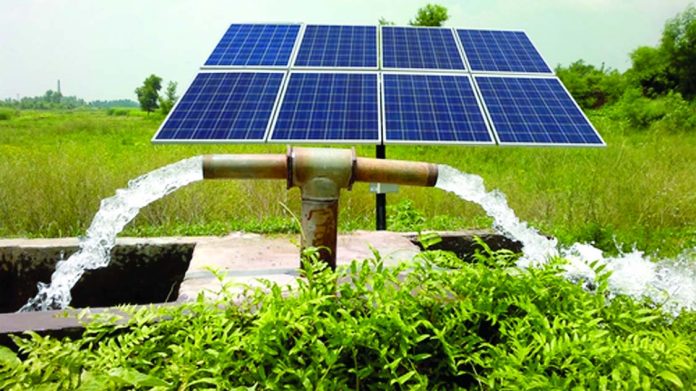Green Energy: Powering a Sustainable Future for Our Planet

As climate change becomes one of the most pressing challenges of our time, the shift toward green energy is no longer a choice—it’s a necessity. Green energy, also known as renewable energy, is derived from natural sources that are continuously replenished, such as sunlight, wind, rain, tides, and geothermal heat. Unlike fossil fuels, green energy sources produce little to no greenhouse gas emissions, making them essential in the fight against global warming.
This article explores the fundamentals of green energy, its benefits, and how it’s transforming the way we power our world—paving the way for a cleaner, more sustainable future.
What Is Green Energy?
Green energy refers to power generated from natural, renewable sources that have minimal environmental impact. These include:
- Solar energy: Captured from the sun’s rays using solar panels.
- Wind energy: Generated by converting wind currents into electricity through turbines.
- Hydropower: Produced by harnessing the flow of water, typically from rivers or dams.
- Geothermal energy: Tapped from the Earth’s internal heat.
- Biomass: Derived from organic materials like plant and animal waste.
Unlike fossil fuels such as coal, oil, and natural gas—which take millions of years to form and emit harmful pollutants when burned—green energy is sustainable and eco-friendly, offering a viable solution to meet the world’s energy demands without compromising the environment.
Why Green Energy Matters
The transition to green energy is crucial for several reasons:
1. Reduction in Greenhouse Gas Emissions
Burning fossil fuels is the leading source of global carbon dioxide emissions. These emissions trap heat in the atmosphere, leading to climate change and extreme weather events. Green energy sources emit little to no CO₂, helping to mitigate environmental damage.
2. Energy Security and Independence
Relying on imported fossil fuels makes countries vulnerable to global price fluctuations and political tensions. Investing in local renewable resources boosts energy independence and strengthens national security.
3. Job Creation and Economic Growth
The green energy sector is labor-intensive, meaning it creates more jobs per unit of electricity generated compared to fossil fuel industries. From solar panel installation to wind turbine maintenance, renewable energy supports millions of jobs worldwide.
4. Cleaner Air and Health Benefits
Air pollution from fossil fuels contributes to respiratory diseases, heart conditions, and premature deaths. Switching to green energy reduces harmful emissions, leading to cleaner air and better public health.
The Most Promising Green Energy Technologies
Solar Power
Solar technology has seen dramatic improvements in efficiency and affordability. Residential rooftops, solar farms, and even floating solar panels are becoming increasingly common, helping homeowners and businesses reduce electricity bills and carbon footprints.
Wind Energy
Both onshore and offshore wind farms are rapidly expanding. Advances in turbine design and energy storage have made wind one of the cheapest and most effective forms of green electricity in many regions.
Hydropower
Hydropower is currently the largest source of renewable electricity globally. While large dams can have ecological impacts, small-scale hydro systems offer cleaner and less disruptive alternatives for rural communities.
Geothermal
This underutilized energy source taps into the Earth’s natural heat. Geothermal plants provide stable, round-the-clock power and are ideal for regions with volcanic or tectonic activity.
Green Hydrogen
Although still emerging, green hydrogen—produced by electrolysis using renewable energy—holds promise for decarbonizing hard-to-electrify sectors like heavy industry and long-haul transportation.
Challenges Facing Green Energy
Despite its advantages, green energy still faces several challenges:
- Intermittency: Solar and wind energy are weather-dependent. This can be mitigated with energy storage systems like batteries or integrating multiple renewable sources.
- High Upfront Costs: Although operational costs are low, the initial investment for infrastructure can be expensive.
- Land Use and Wildlife Impact: Large installations may disrupt ecosystems, though proper planning and innovation are addressing these concerns.
Governments, industries, and communities must work together to overcome these barriers and accelerate the transition to clean energy.
How You Can Support Green Energy
Whether you’re a homeowner, a student, or a business owner, there are several ways to contribute to the green energy movement:
- Switch to a green energy provider that sources electricity from renewables.
- Install solar panels or support local community solar programs.
- Reduce energy consumption through energy-efficient appliances and practices.
- Support clean energy policies and vote for leaders prioritizing climate action.
- Educate others about the benefits of renewable energy.
Every small action contributes to a larger change, helping to build a more sustainable and equitable future.
The Future of Green Energy
The momentum behind green energy is unstoppable. With increasing public awareness, technological advancements, and supportive policies, renewable energy is expected to dominate global energy markets in the coming decades. The International Energy Agency (IEA) predicts that by 2030, renewables will account for over half of global electricity generation.
As the world embraces this green revolution, individuals, businesses, and governments must seize the opportunity to lead the way. The future of our planet—and the health of future generations—depends on the choices we make today.
As the world faces mounting environmental challenges, embracing green energy is not just an option—it’s a necessity. From solar and wind to emerging innovations, renewable energy sources offer a clear path toward a cleaner, healthier, and more sustainable future. By investing in these solutions today, we collectively shape a better tomorrow for generations to come. 🌎⚡
